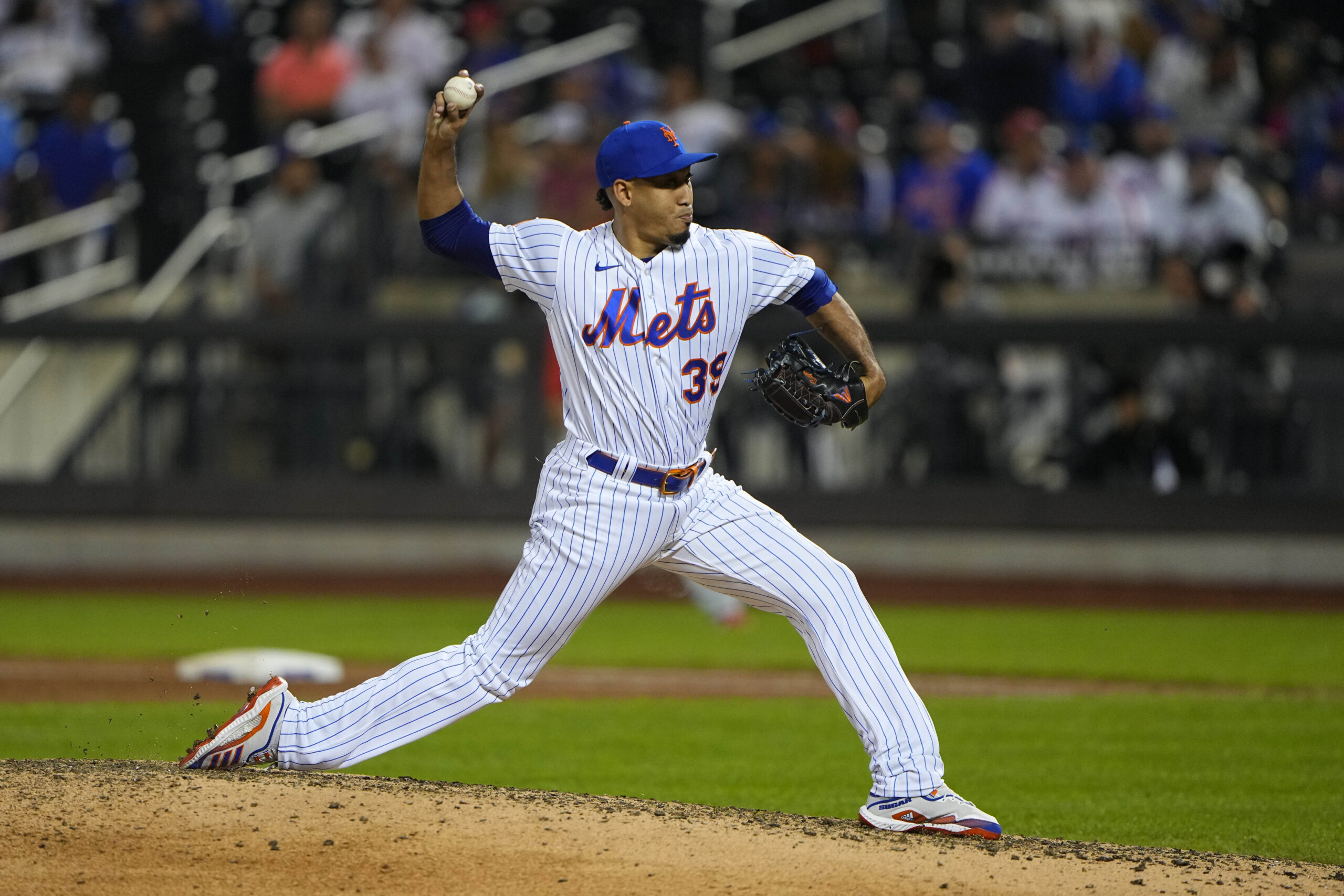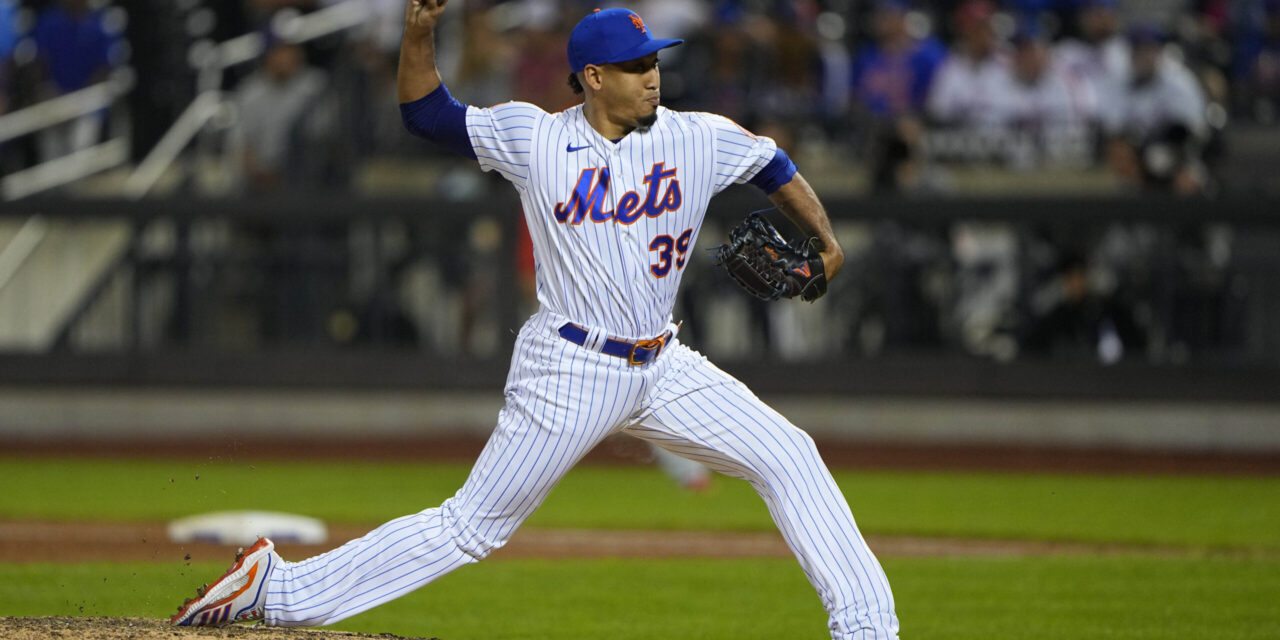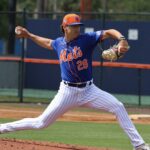
Credit: Gregory Fisher-USA TODAY Sports
Although it probably didn’t feel like it by the end of the 2021 regular season, the New York Mets’ bullpen was one of the club’s biggest assets.
With a cumulative fWAR of 4.4, New York’s relief corps checked in as the 10th-best unit in baseball. The man responsible for adding the most to that number? That’d be closer Edwin Díaz, who put up 2.0 fWAR all by himself, his second straight season of being a significant contributor. In fact, that fWAR number put him among the league’s best when talking about qualified relievers.
Having Díaz be such a crucial part of the Mets’ bullpen has been a long-debated topic, but with the way New York has approached the offseason prior to the lockout, it certainly seems as if the right-hander will once again be an important piece of the puzzle for new manager Buck Showalter.
Keeping that in mind, here are three different areas of Díaz’s game I’ll be keeping an eye on in 2022.
Slider Usage
Díaz has always been a predominantly fastball-slider pitcher throughout his career, but he took things to another level in 2021.
While he didn’t throw them very often, Díaz also featured other pitches on the mound at times, like a curveball, sinker, and changeup. These offerings have been slowly falling off over the years, and this past season was when the transition became complete — the 27-year-old threw nothing but four-seamers and sliders. The results were good for both pitches, as his four-seamer limited hitters to a .727 OPS and 105 wRC+ with a 24.8% strikeout rate, while his slider produced a .407 OPS, 24 wRC+, and 47.0% strikeout rate.
The slider has always been his best pitch, and I think part of his struggles in 2019 was due to the offering not performing as it had in the past (.942 OPS, 147 wRC+, 35.9% strikeout rate). This pitch bounced back to his career norms in 2020, but it was good to see that success continue into 2021 with a full 162-game schedule.
Díaz has never finished a year with his slider usage rate below 30.0%, but from 2016-19, it crested over 37.0% just once (37.3% in 2018). He threw it at a 37.9% clip in 2020 and followed that up with a near-identical 37.8% rate in 2021. With it being his most effective pitch and one of the best sliders in baseball among relievers when using FanGraphs’ pitch value as the measuring stick, it’ll be interesting to see if his usage starts climbing toward 40.0%.
Quality of Contact
There were a few parts of Díaz’s terrible 2019 campaign that immediately stand out to anyone combing through his stat page. We already mentioned the decreased effectiveness of his slider, and another area that jumps out is how poor his quality-of-contact numbers were.
Through his first 191 innings pitched in the big leagues from 2016-18, Díaz had produced a 22.1% soft-hit rate and a 30.2% hard-hit rate allowed. Through his first 58 innings as a Met in 2019, those numbers got dramatically worse to 16.3% and 48.1%, respectively. Among relievers with at least 50 frames, that hard-hit rate allowed was the third-worst mark in baseball.
After watching his soft-hit rate allowed drop down to 15.9% in 2020, it ticked back up in 2021 to 17.6%. More importantly, Díaz’s hard-hit rate allowed has improved in each of the past two years, going from 25.0% in 2020 to a career-best 21.3% mark this past season.
One can imagine that the resurgence of his slider helps, along with the fact that he’s simply throwing it more often than he had in past years. When looking at the three different years in which his slider usage was higher than 37.0% (2018, 2020, 2021), the right-hander’s hard-hit rate allowed has fallen below 30.0% every single time.
Can it go much lower? Probably not — his 2021 rate was already the fifth-lowest among qualified relievers, but we’ll see what he has in store for 2022 in this statistical category.
Home/Away Splits
There’s been plenty of talk regarding the discrepancy in Díaz’s performance in save and non-save situations, which is certainly valid. However, his home/road splits from this past year are just as stark. In 39 innings pitched at Citi Field in 2021, Díaz was dominant with a 1.38 ERA. But in 23 2/3 innings on the road? That number shot all the way up to 6.85.
And sure, his strikeout rate went down significantly (38.7% at home, 29.0% away) and his walk rate went up (8.7% at home, 9.3% away), but not so much to explain such a huge difference in ERA. He was just a lot more hittable as a visiting player than he was in Queens.
At home, opposing hitters mustered just a .132 average against him and didn’t hit a single home run. The right-hander also produced a 0.77 WHIP and stranded runners at an 80.6% clip. On the road, opposing hitters posted a .283 batting average with three homers. His WHIP nearly doubled to 1.52 and he only stranded runners at a 54.6% clip.
The 2022 season will be Díaz’s final year under team control before hitting the open market as a free agent. He’s had his issues, but another strong year overall will likely put the Mets in a position to make a potentially difficult decision as to whether they should try to re-sign him or let him take his talents elsewhere. It should be interesting to watch it unfold.















